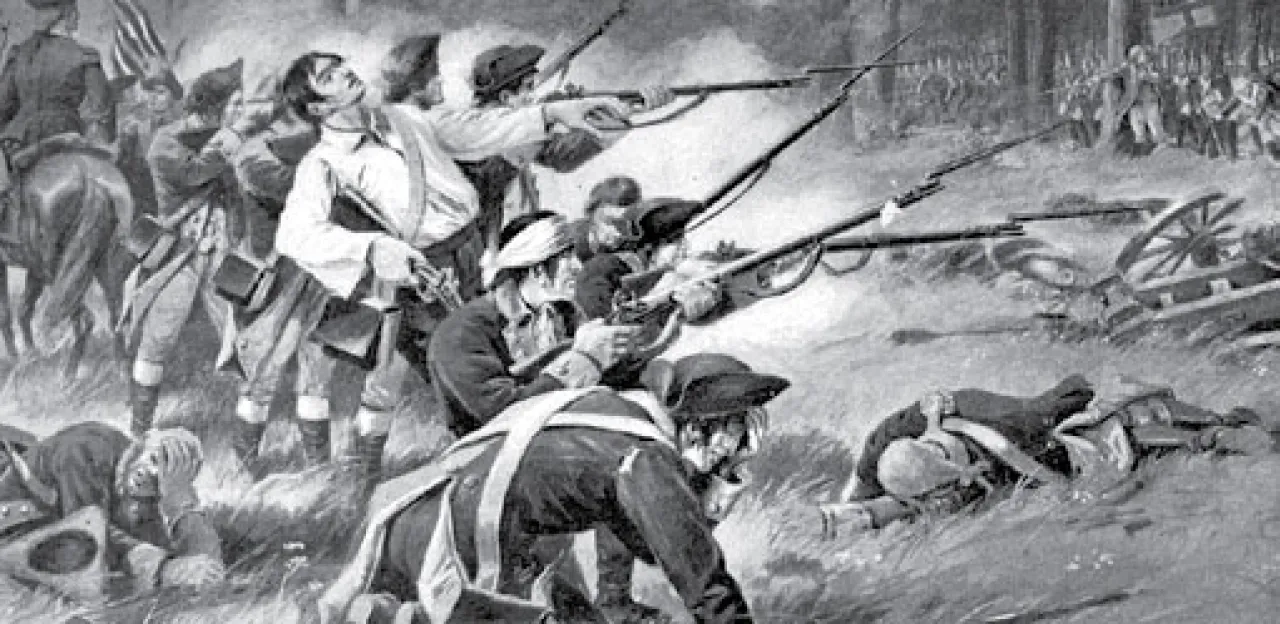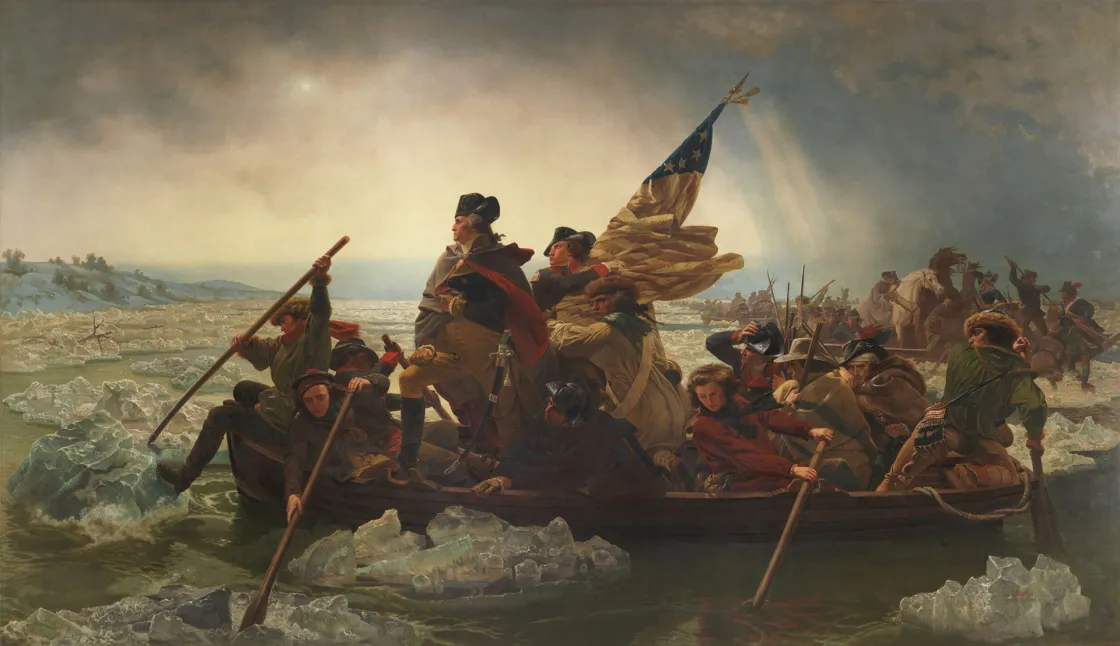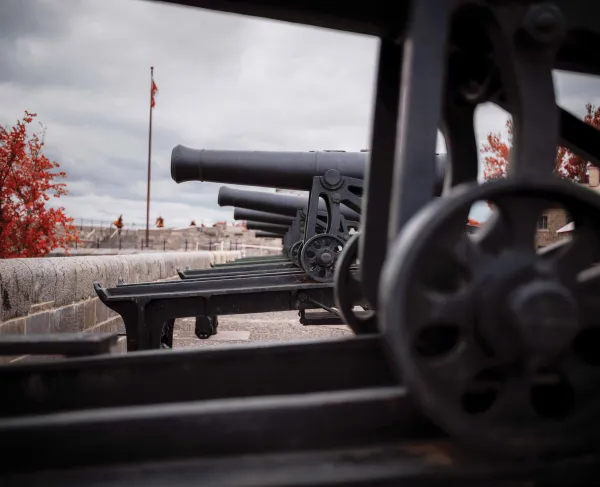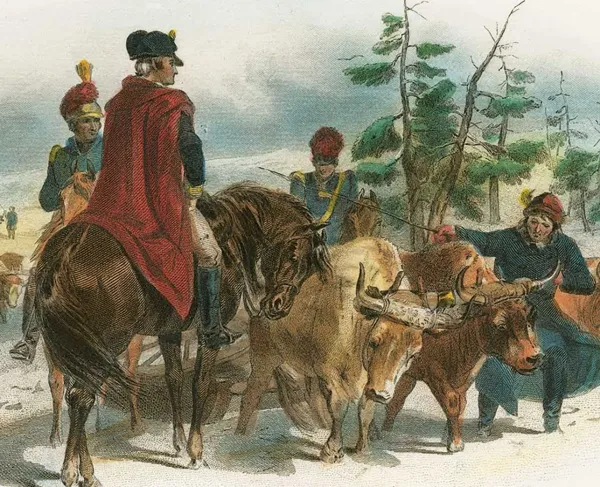John Glover and the Marblehead Men of Massachusetts

Few regiments in the Continental Army have been given such attention as that of the 14th Continental Regiment, a short-lived band of brothers that history remembered for their grizzled, hard-nosed ruggedness and willingness to assist in some of the war’s earliest, most dire moments. The ‘men of Marblehead’ have earned the mythical treatment of our respect and pause, but most have only heard of the town that brought these soldiers into combat. Who were they and how exactly did their service earn them a place in annuals of American military history?
Marblehead, Massachusetts was a small rock of a town just north of Boston, extending on a peninsula into the Atlantic Ocean that separated it from the village of Salem. The locals were the sea-faring type, whose primary industry became fishing and privateering. The economy depended much on trade, making some colonists like Jeremiah Lee, among the wealthiest in the 1760s. As British taxation and isolation intensified in Massachusetts in the 1770s, the men of Marblehead began to actively take part in undermining Royal authority. Among these rousers was John Glover, a successful merchant with a slew of ships at his disposal. Both Lee and Glover served on colonial committees in response to the Boston Massacre in 1770, the closing of the Port of Boston in 1774, the emergence of the Continental Congress, and their levying of an embargo against British goods. In April 1775, war finally came to Massachusetts with the events at Lexington and Concord on April 19. The previous day found Lee and Glover on the run as British regulars sought to arrest their mutual partners, Samuel Adams, and John Hancock. Lee died of exposure from hiding in a cornfield, and the band of Marblehead fisherman looking to get involved in the hostilities fell under the command of John Glover. Earning a commission as a lieutenant colonel, Glover’s Marblehead men became the 21st Massachusetts Regiment, and officially entered the War of Independence in June when they linked up with the new Continental Army in Boston. Gen. George Washington was impressed with Glover’s background and soon ordered Glover’s vessel Hannah (named after his wife) take to the coast to plunder British ships. Several other ships owned by Glover were put to use off the Massachusetts coastline, and Marblehead itself became a fortified port defended by Glover’s newly organized 14th Continental Regiment.
In 1775, while Massachusetts had been embroiled with increasing tensions over British authority for years, such divisive episodes were not experienced in other colonies. Militia and volunteers from Pennsylvania and Virginia who came to Massachusetts might have been there for any number of reasons, including a hatred of the British monarchy. That does not mean they came and identified as ‘a fellow American’ in the sense we think of today. To his credit, one major goal of Washington’s (who identified as an American first, and a Virginian second) was to assemble a continental force that would meld the soldiers into a singular national army that identified as American; an army that would not allow regional prejudices to divide his forces. With these regional differences came the inevitable quarrels. One such story early on shows just how easy the whole thing could have unraveled. The Continental Army did not have proper uniforms in 1775. Most officers could afford tailored uniforms. Most soldiers wore their civilian clothing, creating quite a hodge-podge of look to the young army. The Marblehead men wore vests and trousers, weathered boots of leather, and were known for their maritime discipline. There were also free African Americans among their ranks. These differences apparently did not bode well for the mountain men of Virginia, who appeared in Boston wearing their white-skinned fur hunting outfits, and others looking like backwoods farmers. Someone made a joke, and it quickly boiled over into a full-scale brawl. As hundreds of men warred with each other, appearing on horseback was Washington and his slave, Billy Lee. The eyewitness account describes Washington throwing his bridle to Lee at the instant he jumped from his horse. The commander ripped entangled bodies from one another as he made his way to the center of the scuffle. Within seconds, the crowd began to clear, and there stood Washington with his hands clenched around the throats of two men, shaking them and yelling for everyone to settle down. The sight of Washington, literally, man-handling the mob to submission, defused the brawl in an instant, and the men dispersed. Washington did not punish any involved in the brawl, and it seemed he did not have to. The incident reverberated across the rank and file that pettiness and regional prejudices would not be tolerated in the continental army.
Glover’s men would earn their fame though from other, more noble deeds than brawling with fellow American soldiers. The first true act of heroism came in the closing moments of the Battle of Long Island in August 1776. The Continental Army had severely underestimated the tactical precision of the British command, particularly that of Gen. William Howe, who divided his forces and successfully flanked the Americans into a rout. Washington withdrew his forces to the American trenches along the Brooklyn side of the East River, giving Howe the opportunity to surround him. Over the course of the night and early morning of August 29-30, Washington ordered Glover’s men to row the entire Continental forces: men, artillery, wagons, and horses, across the East River to Manhattan, without being detected. As daring as this sounds, they were greatly aided by a well-timed dense fogbank that made visibility all-but impossible. By morning, the Americans had safely made it across the river to the surprise of His Majesty’s army. It would earn Washington a reputation for stealth maneuverability and would further the reputation of the Marblehead men.
In the following weeks, as the Continental Army struggled to fend off the advancing British through the lower Hudson region, Glover’s 14th Regiment was active in most of the American defenses. Perhaps the worthiest of praise and of our notice came at the Battle of Pell’s Point, off the eastern shores of the Bronx in New York. Washington and the main forces had retreated to Harlem Heights and were staging their defenses when Howe decided to approach for a main assault. When it became apparent the British were on the move, (they had mistakenly landed on an island in the Long Island Sound under more fog, and then proceeded to land onshore) the main American forces pulled further north. Glover was given command of a brigade of about 750 Continental troops who were to hold off the British approach. In the vicinity where Glover was positioned, there were several stone walls that created impermeable cover during a firefight. On October 18, after failing to receive orders from Maj. Gen. Charles Lee, Washington’s second-in-command, Glover went on the offensive and divided his four regiments to create several waves of musket assaults. As the British landed on the beach, the Americans opened fire at close range, completely taking them by surprise. The success of the initial ambush worked, and the British fell back for a time. Several attempts to push forward by Howe’s army were unsuccessful until the size of the British infantry began to overwhelm the smaller American forces. Glover’s 14th Regiment held the rear and guarded the retreat that ensued. Some estimates have the British losing nearly two hundred men on the landing. Despite losing about twenty men during the skirmish, Glover was successful in slowing the British advance, allowing the main forces under Washington to get to White Plains without incident.

The next noticeable mention of Glover’s men is probably their most famous, as they were the hands at the oars that rowed Washington and the army across the Delaware River on Christmas night in their approach to take Trenton. Likely at ease wielding the massive Durham boats that were used, the men of Marblehead nonetheless were able to get across the ice-choked river in the midst of a blizzard. They participated in the attack on Trenton, and then again rowed the army back to Pennsylvania with the nine hundred Hessian prisoners taken in the American victory. However, this would prove to be the last of Glover’s 14th Regiment. Enlistments expired at the end of the year, a concern that had essentially forced Washington’s decision to attack Trenton in the first place. Despite the offer of a bounty for six more weeks of service, only a handful of the one hundred fifty Marblehead soldiers stayed in the army on January 1, 1777. The majority returned to Massachusetts with many becoming privateers for the Continental navy. John Glover eventually became a Brig. Gen. in the Continental army, and successfully guarded the Hudson River for a time, but deteriorating health ended his career before the war was over.
Despite only being in active service for about eighteen months, Col. John Glover’s Marblehead men became legendary figures. Regardless of their early departure from the continuing war, it seems their heroic feats of strength and bravery were enough to secure their place in the realms of Revolutionary War lore. Perhaps it doesn’t hurt that they too have been lionized by Emmanuel Leutze’s largely fictionalized painting of the Delaware crossing, looking as fearless and determined as the commander-in-chief. What remains certain though is that the people of Marblehead and of Massachusetts could look upon these men with pride in knowing that they behaved valiantly for the time they committed to the Cause. And even as the war dragged on for several more years, their legacy helped inspire others to pick up the oar where they had left off.





